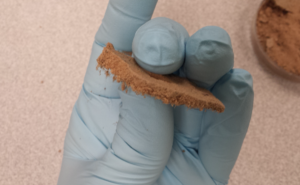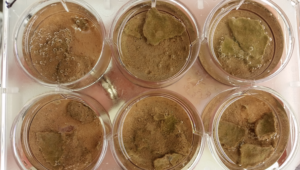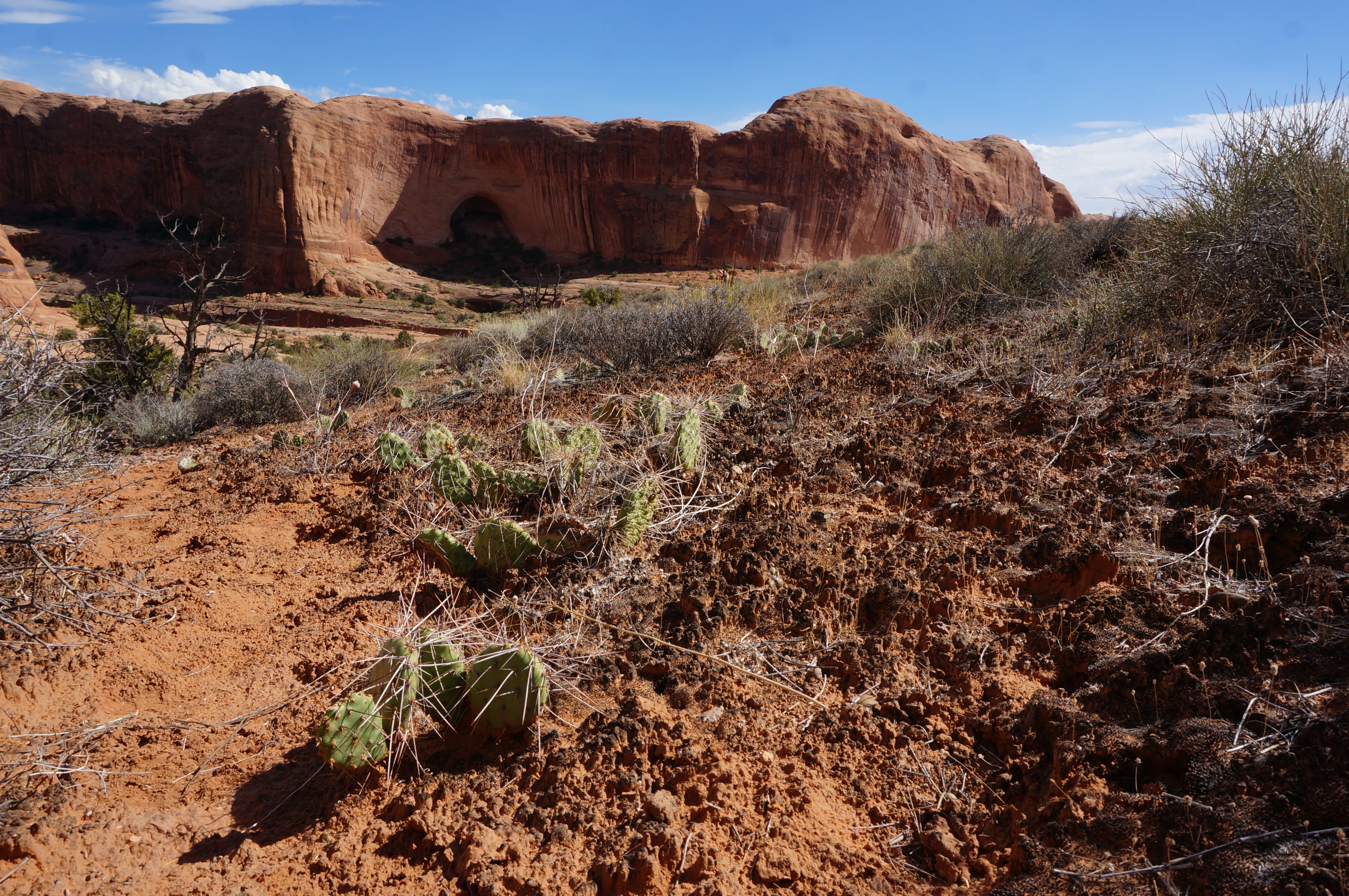
Biocrust is held together primarily by exopolysaccharides produced by the filamentous Cyanobacterium, M. vaginatus.
Biological soil crusts, or biocrusts, contain communities of microorganisms—including fungi, bacteria, and archaea—that dwell together within the uppermost millimeters of soil in arid lands. These microbes can exist for extended periods in a desiccated, dormant state, becoming metabolically active when it rains. Understanding how biocrust microbial communities adapt to their harsh environments could help shed light on the roles of soil microbes in the global carbon cycle.
Using a suite of tools called “exometabolomics,” Berkeley Lab scientists led by Trent Northen’s group in Environmental Genomics and Systems Biology (EGSB) found that specific compounds are transformed by and strongly associated with specific bacteria in native biological soil crust. The researchers reported their findings in a paper published January 2 in Nature Communications.
The work follows a 2015 study that examined how specific small molecule compounds (“metabolites”) were transformed in a mixture of bacterial isolates from biocrust samples cultured in a milieu of metabolites from the same soil. “We found that the microbes we investigated were ‘picky’ eaters,” said Northen, a senior scientist who is also affiliated with the DOE Joint Genome Institute (JGI). “We thought we could use this information to link what’s being consumed to the abundance of the microbes in the intact community, thereby linking the biology to the chemistry.”

Microbes in biocrust become metabolically active immediately upon wetting. Seen here, M. vaginatus turns green and releases oxygen.
In the new study, the investigators determined that the microbe-metabolite relationships observed in the simplified test tube system could be reproduced in a more complex soil environment. “This study suggests that laboratory studies of microbial metabolite processing can help understand the role of these microbes in carbon cycling in the environment. This study gets us closer to understanding the complex foodwebs that are vital in nutrient dynamics and overall soil fertility,” said study first author Tami Swenson, a scientific engineering associate in Northen’s group.
Read more in the Berkeley Lab News Center.




